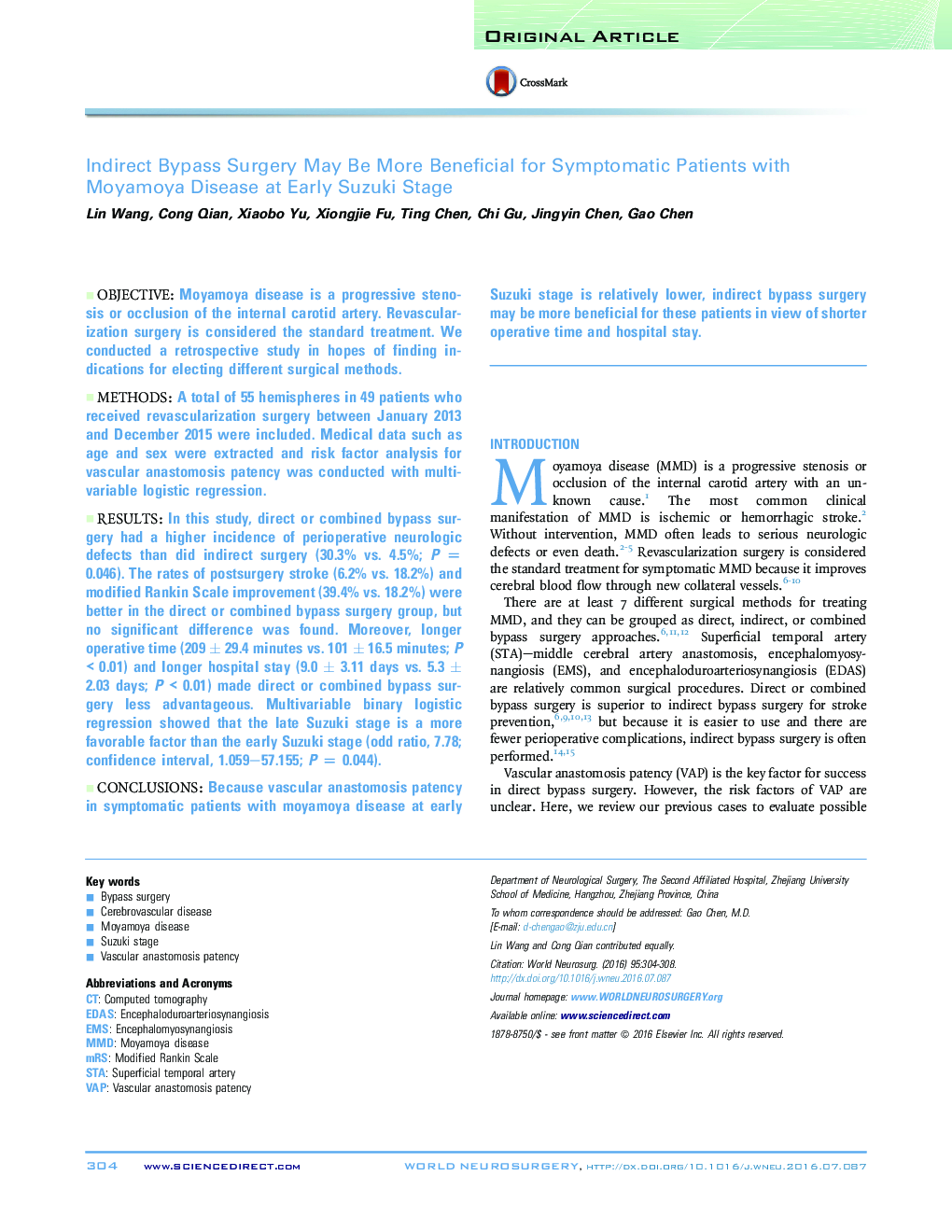| Article ID | Journal | Published Year | Pages | File Type |
|---|---|---|---|---|
| 6043047 | World Neurosurgery | 2016 | 5 Pages |
ObjectiveMoyamoya disease is a progressive stenosis or occlusion of the internal carotid artery. Revascularization surgery is considered the standard treatment. We conducted a retrospective study in hopes of finding indications for electing different surgical methods.MethodsA total of 55 hemispheres in 49 patients who received revascularization surgery between January 2013 and December 2015 were included. Medical data such as age and sex were extracted and risk factor analysis for vascular anastomosis patency was conducted with multivariable logistic regression.ResultsIn this study, direct or combined bypass surgery had a higher incidence of perioperative neurologic defects than did indirect surgery (30.3% vs. 4.5%; P = 0.046). The rates of postsurgery stroke (6.2% vs. 18.2%) and modified Rankin Scale improvement (39.4% vs. 18.2%) were better in the direct or combined bypass surgery group, but no significant difference was found. Moreover, longer operative time (209 ± 29.4 minutes vs. 101 ± 16.5 minutes; P < 0.01) and longer hospital stay (9.0 ± 3.11 days vs. 5.3 ± 2.03 days; P < 0.01) made direct or combined bypass surgery less advantageous. Multivariable binary logistic regression showed that the late Suzuki stage is a more favorable factor than the early Suzuki stage (odd ratio, 7.78; confidence interval, 1.059-57.155; P = 0.044).ConclusionsBecause vascular anastomosis patency in symptomatic patients with moyamoya disease at early Suzuki stage is relatively lower, indirect bypass surgery may be more beneficial for these patients in view of shorter operative time and hospital stay.
